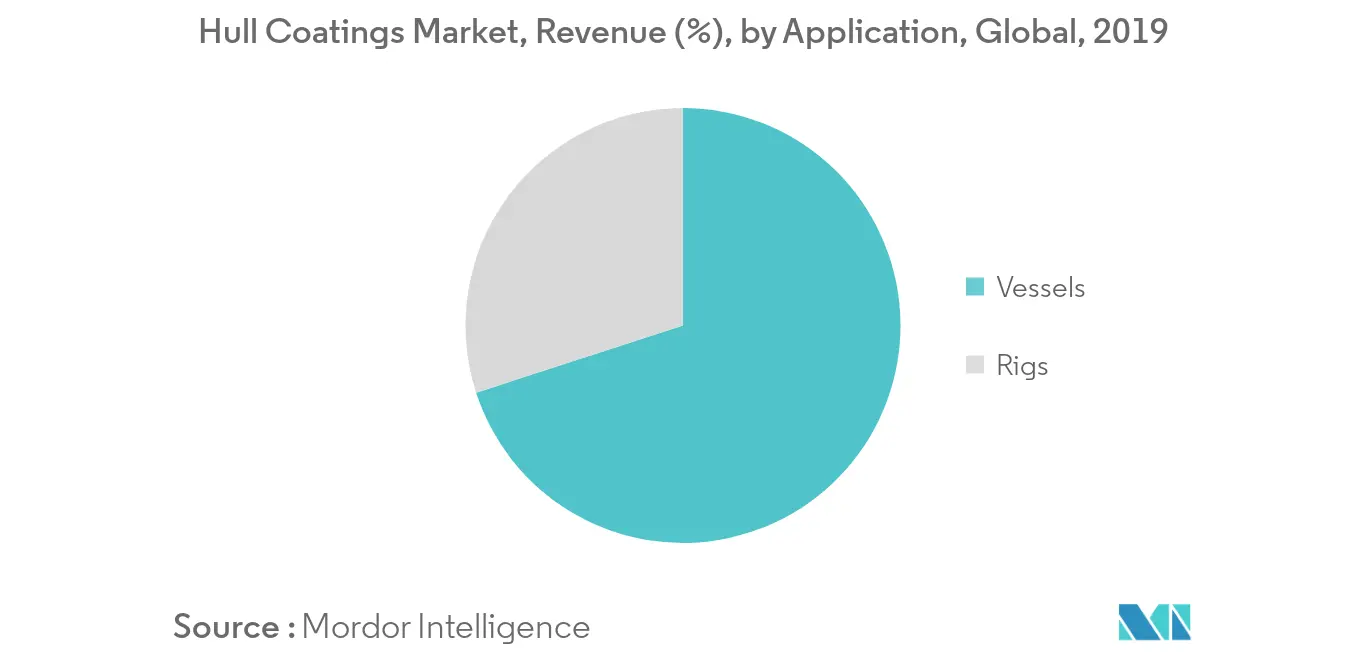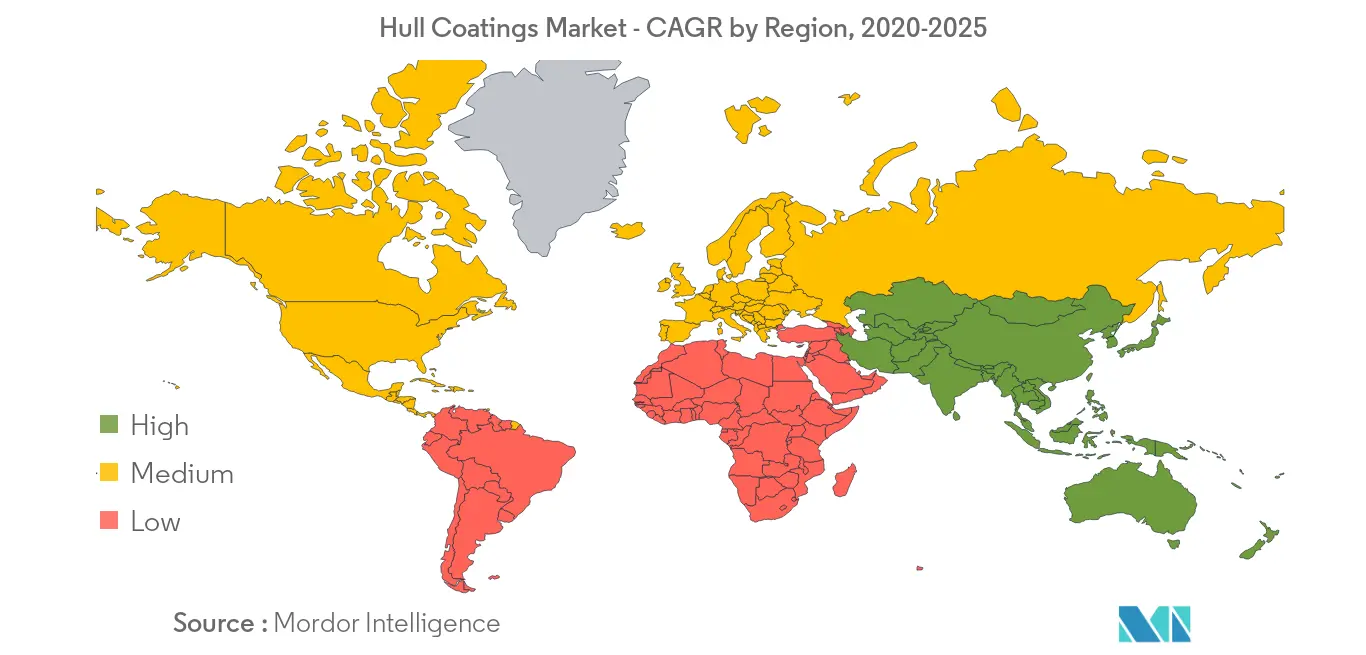Market Trends of Hull Coatings Industry
Vessels Segment to Dominate the Market Demand
- Hull coatings, also referred to as “anti-fouling”, are essential for marine ships. They exhibit anti-corrosive and anti-fouling properties, which can increase theworking life cycle of ships. High-performance anti-fouling provides lifelong benefits, including extended dry-dock intervals and reduced time in dry-dock, lower future maintenance costs, and reduced greenhouse gas emissions through lower fuel consumption.
- These coatings play a key role in reducing the overall operational and commercial costs of a vessel. Fuel can represent as much as 50% of a ship’s total operating costs. If ships do not use anti-fouling coatings, fuel consumption, cost, and carbon dioxide emissions could increase by as much as 40%.
- Marine vessels are the largest users of hull coatings and occupy the major share of the market.
- The Asia-Pacific market looks perspective, owing to the enormous growth of the shipbuilding industry in emerging countries, such as India, Vietnam, and the Philippines. Furthermore, the Middle East & African region is observing major growth, due to the growth in oil trade through vessels
- Such trends across the world have been leading to the growth of production in the ship building industry, which is expected to drive the demand for hull coatings for application in vessels.

Asia-Pacific Region to Dominate the Market
- The Asia-Pacific region dominated the global market share. Asia-Pacific is the largest ship producing region in the world, cateringto the demand for various types of vessels, ranging from ferries, small boats, fishing vessels, tow andtugboats, to theoil industry vessels, cargo ships, passenger ships, bulk carriers, and container ships.
- In Asia-Pacific, countries, such as China, Japan, and South Korea, are the leading producers of vessels, while large shipyards also exist in various other nations of the region.
- Ships are mainly built after procuring projects, and according to the customer requirements. It takes a minimum of 2 years to complete the production of a ship. Currently, such countries have been receiving bulk orders for vessels.
- For instance, recently, three South Korean yards, namely, Daewoo Shipbuilding & Marine Engineering (DSME), Hyundai Heavy Industries, and Samsung Heavy Industries, won more than 50 orders for new large-scale LNG tankers, which are expected to be delivered in the next three years. Furthermore, China holds a contract to build 24 vessels, while Japan and Singapore hold contracts to build 15vessels and 1 vessel, respectively.
- The oversupply of ships in China has disturbed the entire shipbuilding industry in the country. The government has been trying to cut on the subsidizing over-capacity. This has had an impact on marine OEM for building new ships.
- Hence, such factors are projected to show an impact on the demand for hull coatings from the shipbuilding industry, in the region, during the forecast period.



